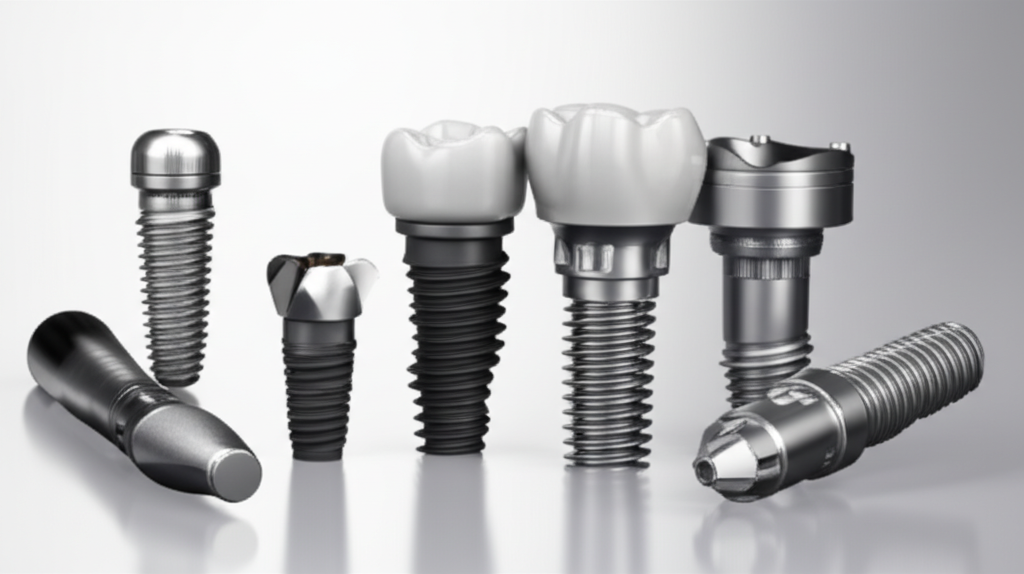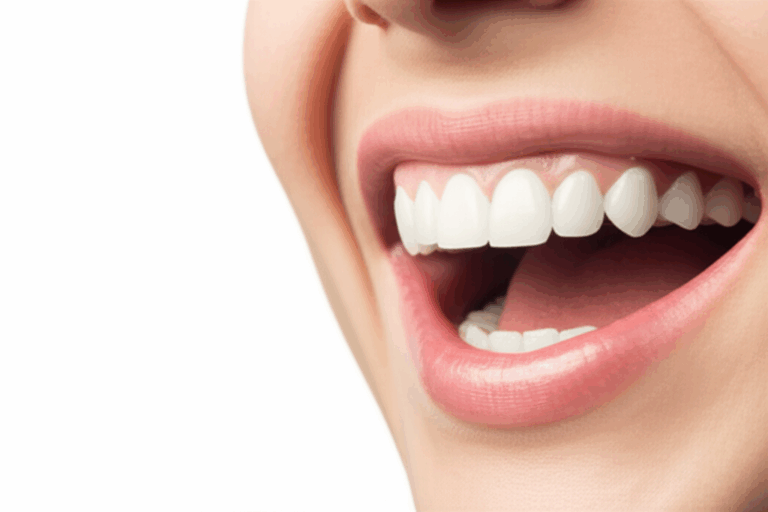
What Are The Different Types of Dental Implants? Your Comprehensive Guide to Tooth Replacement Options
Table of Contents
- Introduction: My Journey Into the World of Dental Implants
- Fundamental Components of a Dental Implant
- Implant Post (Fixture)
- Abutment
- Prosthesis
- Primary Dental Implant Types Based on Placement & Structure
- 1. Endosteal Implants (Most Common)
- 2. Subperiosteal Implants (Historic/Less Common)
- 3. Zygomatic Implants (For Severe Upper Jaw Bone Loss)
- Specialized Dental Implant Solutions & Techniques
- 1. Mini Dental Implants (MDIs)
- 2. All-on-4 Dental Implants (Full Arch Restoration)
- 3. Immediate Load Dental Implants (“Same-Day Implants”)
- Other Classifications of Dental Implants
- Factors Influencing Dental Implant Type Selection
- The Dental Implant Journey: A Brief Overview
- Dental Implant Success Rates & Longevity
- Conclusion: Choosing the Right Dental Implant Type for You
Introduction: My Journey Into the World of Dental Implants
When I first began learning about dental implants, I’ll be honest—my mind was spinning. Words like “endosteal,” “mini implants,” and “All-on-4” felt like something out of a sci-fi movie instead of real ways to replace teeth. But as I kept reading, I realized just how important it is to pick the right type of implant. It isn’t just about your comfort and confidence, but it also changes how your mouth stays healthy long-term.
Knowing the different types of dental implants matters if you’re thinking about replacing missing teeth. Without knowing the details, you can feel confused or, even worse, end up choosing something that doesn’t really work for you.
In this guide, I’ll share everything I learned—from the basic parts of an implant to the good and bad of each type. I’ll use my own experiences and lots of hours listening to dental experts and other patients, so you get a clear, down-to-earth view.
Fundamental Components of a Dental Implant
Before I could figure out the different types of implants, I had to first learn what makes up a dental implant. Think of it like building a house: you need a base, a connector, and finally, the bit that you see and use.
Implant Post (Fixture)
The implant post is like the foundation of a house. Dentists put it into your jawbone with a little surgery. Most of the time, it’s made from titanium because your bone grows really well around it—this is called osseointegration. Sometimes, zirconia is used if someone doesn’t want any metal. It’s strong, doesn’t rust, and looks more like a real tooth, especially if your gums have moved back.
Abutment
The abutment is the middle piece. It’s like a connector or joint. It screws onto the implant post and comes up above your gums. This is what the new tooth (or teeth) will attach to.
Prosthesis
Finally, the prosthesis is what you see and use. It might be a crown (for one tooth), a bridge (for a few teeth), or even a whole denture that snaps onto implants. The prosthesis lets you bite, chew, and smile without worry.
Primary Dental Implant Types Based on Placement & Structure
Once I understood the parts, my next big “aha!” moment was realizing not all implants are put in the same way. Where they go and how they’re made make all the difference.
1. Endosteal Implants (Most Common)
These are the “regular” type and get used the most. If someone says “dental implants” without explaining, they probably mean endosteal.
Description
“Endosteal” means “inside the bone.” Dentists place these screw-shaped implants right into your jawbone. They look like small screws, sometimes cylinders, or even flat blades.
Candidacy
These are best for folks with good, strong jawbones. If you’ve had missing teeth for a long time and lost a lot of bone, sometimes you’ll need extra work like bone grafting first.
Procedure
You usually need a small surgery and a few months to heal so the bone and implant can connect. Some dental offices use special digital tech from a digital dental lab to get the placement just right.
Pros
- Very stable for a long time
- High success rates (95-98% over 10+ years is normal)
- Feels and works like real teeth
Cons
- Healing can take months
- Not good for severe bone loss without extra work
2. Subperiosteal Implants (Historic/Less Common)
You don’t see these much, but for some people, they’re a real help.
Description
Instead of going in the bone, a subperiosteal implant rests on top of the jawbone but under the gums. Think of a metal frame that sits on the bone with small posts that stick up through the gum and hold the new teeth.
Candidacy
These used to be popular for people who didn’t have enough jawbone and couldn’t have bone grafts. Now, they’re not used much, but some people still need them.
Procedure
This one is more complicated at the start. Dentists will take a scan or mold of your jaw to make a custom metal frame. Healing is faster because the frame isn’t inside the bone.
Pros
- Avoids bone grafts
- Works for people with thin jawbones
Cons
- Not as steady long-term
- More chances for gum problems
- Less likely to last as long as endosteal implants
3. Zygomatic Implants (For Severe Upper Jaw Bone Loss)
I hadn’t heard of these at all when I started! Zygomatic implants fix a pretty rare but hard problem.
Description
Instead of using jawbone, these longer implants go into your cheekbone (called the zygomatic bone). They’re about twice as long as normal implants and are used when the upper jawbone is too weak, thin, or gone.
Candidacy
Most people won’t ever need these. These are for folks with major bone loss up top from injuries, genetics, or years of wearing dentures.
Procedure
This is tough surgery, so only specialists should do it. Planning usually involves high-tech scans, sometimes with help from an implant dental laboratory.
Pros
- Strong, fixed teeth even without grafts
- Often get new teeth the same day
Cons
- Harder surgery
- More risk, so pick your dentist carefully
Specialized Dental Implant Solutions & Techniques
If you’re like me, you want choices. In the implant world, you’ve got a few—especially if your mouth isn’t a simple case.
1. Mini Dental Implants (MDIs)
I was surprised at how tiny and neat these are!
Description
Mini dental implants (MDIs) have a smaller width—sometimes less than 3mm. Often, they are one single piece (combining the post and the connector).
Candidacy
Mini implants are a lifesaver if your jawbone is too thin for normal implants—or you have loose dentures and want them tightened up quickly.
Procedure
You can often skip bone grafts. Less cuts, less pain, and sometimes you can use them the same day.
Pros
- Small surgery, less pain
- Less money
- Heal quickly
- Perfect for locking in dentures
Cons
- Not as tough for back teeth or heavy chewing
- Might not last as long if put under a lot of stress
2. All-on-4 Dental Implants (Full Arch Restoration)
My first All-on-4 case really stuck with me. The patient was nervous and left with a big smile—all in one day!
Description
All-on-4 isn’t a new type of implant but a way of using them. Four (sometimes six) implants, carefully placed, support a whole row of new teeth. Two go in straight, and the other two are angled to lock in better.
Candidacy
Great for people who have lost most or all their teeth in one jaw, especially if there’s not enough bone everywhere for lots of normal implants.
Procedure
With lots of planning—sometimes with guides from a china dental lab—the process can give you new teeth the same day, though you may need changes as you heal.
Pros
- Full-row teeth with fewer implants
- “Teeth-in-a-day” is possible
- Usually no bone graft needed
Cons
- You still need some bone for support
- Higher planning costs and needs careful work
3. Immediate Load Dental Implants (“Same-Day Implants”)
Sometimes you don’t want to wait for your smile to come back.
Description
For some people, you can place the implant and a temporary crown in just one visit.
Candidacy
This only works if your jawbone is strong enough to hold the implant steady right away. Not for everyone, but great if you can do it.
Procedure
With a good check-up and a 3D scan, the dentist places the implant and puts on a temporary crown. You’ll swap it out for the final tooth once you’re healed.
Pros
- Fewer trips to the dentist
- Looks and works right away
Cons
- Risky if you bite too hard before it heals
- Not possible if your bone isn’t healthy enough
Other Classifications of Dental Implants
By now, you can tell dental implants aren’t simple. Even more details come in when you look at the stuff they’re made from and how they’re built.
- By Material: Titanium is the most common—it’s strong, light, and your body likes it. Zirconia, used in zirconia lab settings, is ceramic and gives a metal-free, natural look.
- By Number of Pieces:
- One-piece implants have the post and abutment as a single part.
- Two-piece implants have separate parts so you can adjust the angle and depth more.
- By Surface: Some implants have rough or water-attracting surfaces. It helps your bone attach faster and makes the implant last longer.
Factors Influencing Dental Implant Type Selection
Picking the “best” dental implant isn’t just about what’s newest or most expensive. Here’s what shaped my choices—and what you should think about, too.
- Jawbone Health & Density: If your jawbone isn’t strong, some implant types are out unless you get extra procedures.
- Overall Health: Things like diabetes or smoking can change how you heal.
- Number of Missing Teeth: You might only need one implant, or maybe two for a bridge, or a whole row solution.
- Personal Preferences: Do you want your teeth fixed in place or removable? Do you want metal-free?
- Budget & Time: Some choices cost more or take more visits and healing time.
- Your Own Mouth’s Structure: Your dentist needs to check how close nerves, sinuses, and other parts are to where the implant will go.
- Skilled Dentist Check-Up: In the end, the best check comes from a pro. New tools—like digital scans and 3D models—help dentists plan better.
The Dental Implant Journey: A Brief Overview
The dental implant road can look scary, but it’s easier when broken into pieces:
- Exam and (maybe) a 3D scan to map your jaw.
- Small surgery done at your dentist’s office with numbing or sedation.
- Wait for three to six months as bone connects to the implant.
- For two-stage implants, the gum gets opened to add the connector.
- The final tooth or teeth are made and put in—now you can eat and smile!
- Clean daily, see the dentist regularly, and take care of your mouth to keep the implant healthy.
For help with keeping your mouth healthy after implants, check out this teeth health guide.
Dental Implant Success Rates & Longevity
Now, the big question: Do they work—and for how long? Here’s what I found, from both research and listening to real patients.
Table: Dental Implant Statistics & Comparative Data
| Metric / Implant Type | Endosteal Implants | Mini Dental Implants (MDIs) | Zygomatic Implants | All-on-4 Implants | All Implants (General) |
|---|---|---|---|---|---|
| Success Rate | 95-98% (10-15 yrs) | 90-95% (mostly for dentures) | 95-98% (with pros) | 95-98% (5-10 yrs) | 95-98% (10-15 yrs in normal cases) |
| Lifespan (Implant) | 20+ yrs, often life | 5-10 yrs (may change later) | 10-15+ yrs | 10-15+ yrs | Lifetime with good cleaning |
| Main Use | Any missing teeth | Holding dentures in place | Extreme bone loss | Full arch teeth | Replace missing teeth |
| Bone Graft Needed? | Sometimes | Hardly ever | No | Not much | Depends |
| Healing Time | 3-6 months | Same day or soon | Same day often | Same day (for temporary) | Varies, 3-6 months typical |
| Typical Cost | High | Medium | Very high | High (good value for full arch) | Varies |
| Satisfaction | Very high | High (for dentures) | High | Very high | Very high |
| Common Problems | Gum swelling, rare nerve issues | Loose, gum pain | Sinus issues | Gum swelling, chips in teeth | Same as above |
A quick tip: Clean your mouth well—brush, floss, and see a dentist often. Your health and habits matter a lot, too.
For more about tooth replacements and ceramic choices, see what a dental ceramics lab can offer for long-term looks and strength.
Conclusion: Choosing the Right Dental Implant Type for You
Dental implants aren’t a “fits everyone” kind of thing. I learned that the “best” one isn’t about a fancy name or a big price—it’s about what’s right for your mouth and your life.
To sum it up: Endosteal implants are awesome if you have a good jawbone. Mini implants can really help denture wearers get a snug fit. All-on-4 is a life-changer for people missing all their teeth in one jaw. Zygomatic? Only for big bone loss.
Don’t skip your first check-up. Make sure you see an implant specialist—a dentist who knows what they’re doing. Ask questions, make sure you understand your options, and get a plan that’s clearly explained.
If you have more questions or want to learn about food, long-term care, or how implants compare to dentures, check out this dental care guide.
Your smile is a huge part of your happiness. Take the time to figure out which implant type is right for you—so you can enjoy every bite, every laugh, and every selfie. Making a smart, informed choice is always best.
This article is for learning reasons and shares what I learned and found. Only a real dentist can tell you what’s right for you after looking at your mouth.








